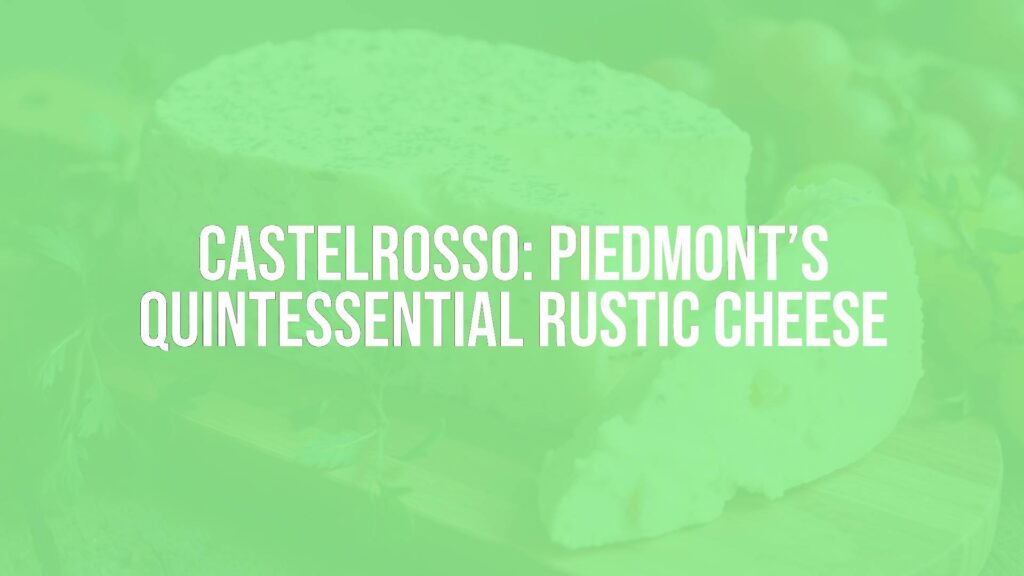Discovering Castelrosso
Castelrosso, sometimes known as Toma Brusca, is a lesser-known yet remarkable Italian cheese hailing from the Piedmont region. This semi-hard, cow’s milk cheese is celebrated for its crumbly texture, subtle complexity, and signature rustic presentation. Revered by cheese aficionados for its terroir-driven character, Castelrosso reflects centuries of regional dairy craftsmanship and local food traditions.
What Makes Castelrosso Special?
The uniqueness of Castelrosso lies in its delicate synthesis of flavors and textures. It features an ivory-white, slightly granular interior encased by a thick gray, often mold-speckled rind. Its flavor profile is mild but nuanced—creaminess is balanced by notes of fresh yoghurt, grass, and a gentle tang. As it ages, Castelrosso develops bolder nutty and mushroom undertones. The cheese’s whimsical, rustic appearance and crumbly density set it apart from Italy’s more widely recognized hard cheeses.
Piedmontese Roots and Historical Significance
Castelrosso’s origins trace to the heart of Piedmont, a region tucked against the Italian Alps. Produced in the foothills and mountainous pastures, this cheese is a proud product of local farm traditions dating back generations. Historically, it served as a staple for rural families seeking sustenance through long winters, often paired with hearty breads and rustic red wines. The revival of artisanal, small-batch production in recent decades has restored Castelrosso’s place on modern Italian tables and cheese boards.
Crafting Castelrosso: Traditional Methods
Artisan cheesemakers use pasteurized or raw cow’s milk for Castelrosso, which is gently heated and curdled using natural rennet. After curd formation, it is cut, drained, and firmly pressed into cylindrical forms. The cheeses are dry-salted, then matured slowly—typically for two to three months—in cool, humid cellars. During this period, the distinctive gray rind develops, imparting earthy, mineral nuances. Each wheel is carefully tended by affineurs to ensure the ideal consistency and flavor evolution.
Classic Pairings and Enjoyment
Castelrosso is cherished for its versatility at the table. Traditionally, locals savor it alongside rustic bread, dried fruit, or simple fruit preserves. It pairs beautifully with Piedmontese wines such as Dolcetto or Barbera, which complement its clean acidity and creamy finish. Castelrosso also accents salads, polenta, or risotto, lending a gentle yet distinctive flavor. For a classic experience, serve Castelrosso at room temperature to highlight both its crumbly texture and subtle aromatics.
Cultural Importance and Serving Suggestions
More than just a cheese, Castelrosso encapsulates the spirit of Piedmontese mountain life and agricultural pride. It is frequently featured during local festivals and in region-specific culinary celebrations. When preparing a cheese board, consider honey or chestnut jam as a companion, as these accentuate Castelrosso’s tang and minerality. For a memorable tasting, alternate bites of Castelrosso with mild salumi and roasted nuts, or integrate it as a unique addition to antipasto platters.
Variations and Modern Takes
While the most traditional Castelrosso comes from bovine milk and is molded into small rounds, some producers offer sheep’s milk versions or experiment with longer affinage for deeper flavors. Contemporary Italian creameries also reinterpret Castelrosso to appeal to new palates, occasionally infusing it with wild herbs or using local grape leaves during aging. Despite these modern touches, the cheese remains firmly rooted in Piedmont’s rural identity.
Conclusion
Castelrosso offers a window into the agricultural history and culinary artistry of northern Italy. Its understated yet captivating nature makes it a delightful discovery for cheese lovers seeking something distinct from better-known Italian varieties. Whether enjoyed simply with bread or as part of an artisanal feast, Castelrosso is a testament to Piedmont’s enduring cheese-making legacy.

